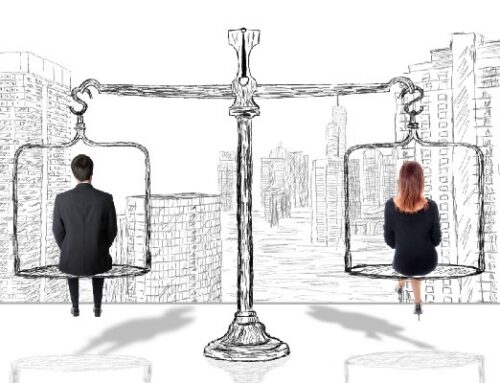Attaining equality between women and men and eliminating all forms of discrimination against women are fundamental human rights. Women around the world regularly suffer violations of their human rights throughout their lives and realising women’s human rights has not always been a priority. Achieving equality between women and men requires a comprehensive understanding of the ways in which women experience discrimination and are denied equality so appropriate strategies must be developed to eliminate such discrimination. In recent years, UN organisation, NGO’s, governments and a large number of multinational firms have been addressing women’s human rights by taking steps towards a more balanced community and little progress has been made in securing their rights across the world. However, important gaps remain and women’s realities are constantly changing, with new manifestations of discrimination against them regularly emerging. Some groups of women face additional forms of discrimination based on their age, culture, ethnicity, nationality, religion, health status, marital status, fertility choices, education, disability and socioeconomic status, among other grounds. These intersecting forms of discrimination must be taken into account when developing values, measures and responses to combat “discrimination against women.”
The aim of this article is to offer an introduction to women’s human rights as a whole, beginning with the main provisions in international human rights law, some of the key discrimination issues that women face across the world and going on to examine the role of culture and traditional patterns in accepting gender discrimination as a social norm in many societies around the world.
International human rights law for women
Since the founding of the United Nations, equality between men and women has been among the most fundamental guarantees of human rights. Adopted in 1945, the Charter of the United Nations sets out as one of its goals to reaffirm faith in fundamental human rights, in the dignity and worth of the human person, [and] in the equal rights of men and women. Furthermore, from the beginning, it has been stipulated that one of the purposes of the United Nations is to promote respect for human rights and fundamental freedoms without distinction as to race, sex, language or religion.
In 1948, the Universal Declaration of Human Rights was adopted. It, too, proclaimed the equal entitlements of women and men to the rights contained in it, without distinction of any kind, such as sex.
Key issues
UNFPA has for more than 30 years been advocated for women and girls, promoted legal and policy reforms and gender-sensitive data collection, and supported initiatives that improve women’s and girls’ health and expand their choices in life. According to a report by UNFPA, following are the key issues that set women back globally from men:
Reproductive health: The ability of women to control their own fertility is fundamental to women’s empowerment and equality. When a woman can plan her family, she can plan the rest of her life. Protecting and promoting her reproductive rights – including the right to decide the number, timing and spacing of her children – is essential to ensuring her freedom to participate more fully and equally in society.
“Women should be allowed to have children by Choice, Not by Chance or by Force.”
In addition, for both physiological and social reasons, women are more vulnerable than men to reproductive health problems. Collectively, complications of pregnancy or childbirth are the number two killer of women of reproductive age. Failure to provide information, services and conditions to help women protect their reproductive health constitutes gender-based discrimination and is a violation of women’s rights to health and life.
Economic reasons: Six out of 10 of the world’s poorest people are women. Economic disparities persist partly because much of the unpaid work within families and communities falls on the shoulders of women, and because women continue to face discrimination in the economic sphere.
Educational reasons: About two-thirds of the world’s illiterate adults are women. Lack of an education severely restricts a woman’s access to information and opportunities. Conversely, increasing women’s and girls’ educational attainment benefits both individuals and future generations. Higher levels of women’s education are strongly associated with lower infant mortality and lower fertility, as well as better outcomes for their children.
Political reasons: Gender equality cannot be achieved without the backing and enforcement of institutions. But too many social and legal institutions still do not guarantee women equality in basic legal and human rights, in access to or control of resources, in employment or earnings, or in social or political participation. And men continue to occupy most positions of political and legal authority; globally, only 24 per cent of parliamentarians are women. Laws against domestic violence are often not enforced on behalf of women.
Cultural practices: As an Interculturalist, majority of my research and study has been on the impact of social, cultural and traditional patterns that perpetuate harmful gender stereotypes and how they create an overall absence of a valid framework in societies to promote the realisation of women’s full rights.
Many of women’s rights violations occur in the private sphere of family life and are justified by appeals to cultural or religious norms. Some of the areas that have obvious and multiple discrimination which women are subjected to are; child marriages, no right of abortion, adolescent pregnancy, preference male births over female births, female genital mutilation, intra-family forced marriages, sexual violence and trafficking, gender-based sex selection, honour-related violence and killings and much more.
Problem Still Remains
Still, despite solid evidence demonstrating the centrality of women’s empowerment to realising human rights, reducing poverty, promoting development and addressing the world’s most urgent challenges, gender equality remains an unfulfilled promise.
Gender parity is a human right. Women are entitled to live with dignity and with freedom from want and from fear. Gender equality is also a precondition for advancing development and reducing poverty.
“Empowered women contribute to the health and productivity of whole families and communities, and they improve prospects for the next generation.”
Proposition
Experience and research have shown that addressing gender parity and women’s empowerment requires strategic interventions at all levels of programming and policy-making and most importantly it requires official parties to create legislation and to take all appropriate measures to ensure the full development, advancement and empowerment of women in the enjoyment of their human rights.
Gender, culture and rights intersect in intricate and complex ways, and cultural rights must be understood as also relating to who in the community holds the power to define its collective identity. The reality of intra-community diversity makes it imperative to ensure that all voices within a community, including those that represent the interests, desires and perspectives of specific groups, are heard, without discrimination.
On an individual level, shifting the paradigm from one that views culture as an obstacle to women’s rights to one that seeks to ensure equal enjoyment of cultural rights is an important first step; Each one of us can contribute to the betterment of these causes by endeavouring our work and mindset to take into account gender factors or issues which may be interlinked with discrimination. We must begin a journey of acting outside our norm cultural comfort zone. What feels acceptable and norm to us, may not necessarily be so common with people of other cultures. But Diversity & ultimately Inclusion can only be achieved when curiosity is incorporated with a mindset of acceptance, flexible attitude and respect.
“This mindset will allow us to commit to a society without borders and boundaries.”









